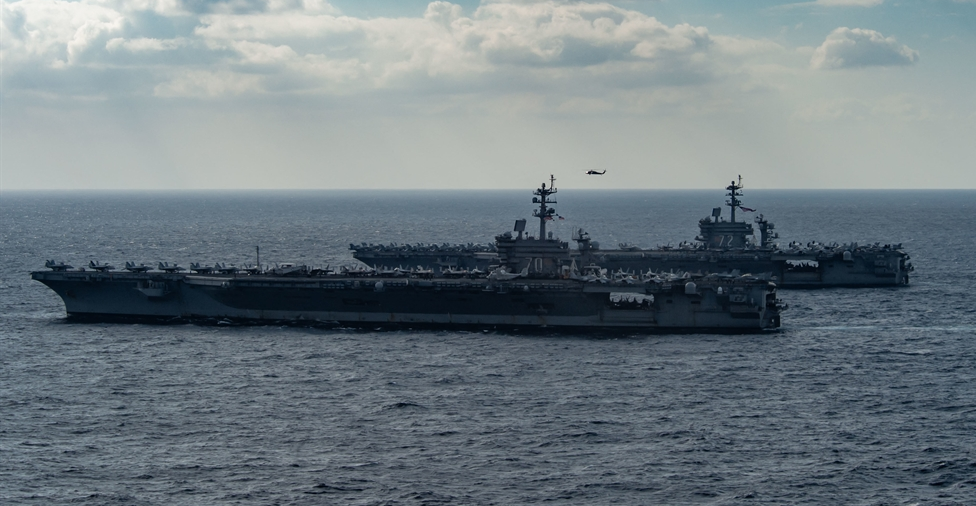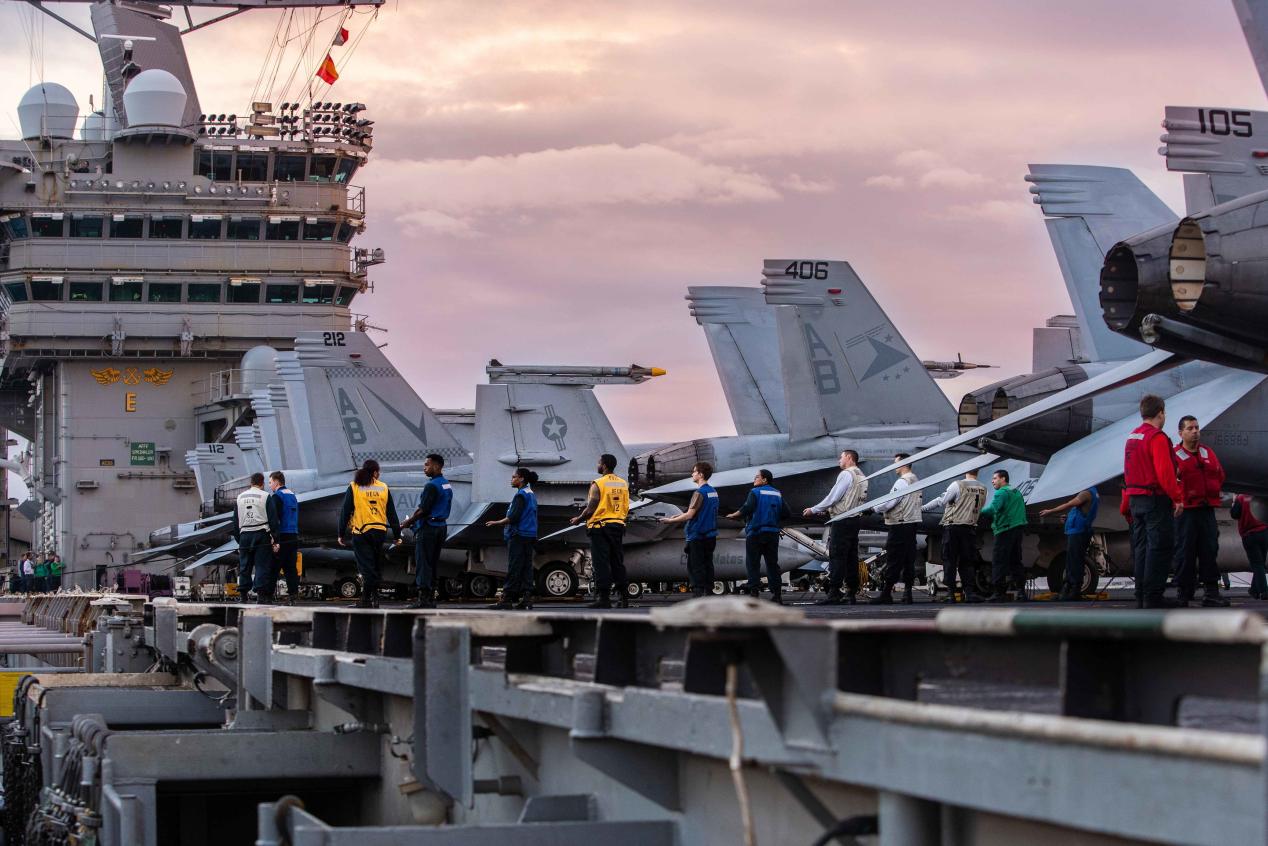
By Ling Yunzhi
At the beginning of 2022, the US Navy took the opportunity of major formation rotations to conduct a large-scale troop build-up and display of power in the Western Pacific. Its intention is self-evident. The US move to deploy most of its mobile naval forces in the Asia-Pacific also shows its focus of "major power confrontation" in the Asia-Pacific region in the future, and we should be vigilant of the trends.
US deploys a rare large-scale troop in Western Pacific
With the implementation of the US "Indo-Pacific" strategy, its strategic focus has shifted to containing the rise of regional power and quickly resolving regional crises. The Western Pacific has increasingly become the focus of its naval deployment. The US Navy deployed unprecedented military power in the Western Pacific region this time. The "luxurious lineup" of three aircraft carriers and two amphibious assault ships almost took up most of the US Navy's mobile forces.
The US Navy dispatched multiple aircraft carriers to the Western Pacific again just three months after last time to rehearse the future major power confrontation scenario, which aims to maintain its hegemonic dominance in the Asia-Pacific region through a show of force. As the security situation in the Asia-Pacific region escalates, the US military will increasingly strengthen its capability of flexible deployment and rapid response in the region, and the Western Pacific region will inevitably become its main battlefield in the future.
Military dilemma makes the "multi-aircraft carrier" situation difficult to maintain
Although the US is assembling multiple aircraft carriers and large amphibious assault ships in the Asia-Pacific region to flex its muscles, its overall military strength is inadequate, and it is struggling to cope with global action scheduling. As a result, the "multi-aircraft carrier deployment" situation in the Western Pacific cannot be maintained for a long time.
On the one hand, the USS Carl Vinson aircraft carrier and the amphibious assault ship USS Essex formations have entered the final stage of deployment. On the other hand, since the amphibious assault ship USS Essex formation was transferred from the Middle East to the Asia-Pacific in the second half of last year, the US Navy met its first combat vacancy in the Middle East in recent years. The US must demonstrate a military presence in the Middle East as soon as possible, especially the deployment of aircraft carriers. In this case, the USS Abraham Lincoln Aircraft Carrier is very likely to be assigned to the Middle East in the near future.
Although the current US aircraft carrier deployment in the Western Pacific region has reached its peak, the element of serving the diplomatic agenda is heavier. Its ability is falling short of its wishes. The so-called "joint operations" in the South China Sea is short-lived. There may even be a "window period" of no aircraft carrier deployment throughout the Asia-Pacific region for three to four months.
Continued US provocations will put regional security at greater risk
Since the Biden administration took office a year ago, the US military has constantly carried out provocative operations, including high-intensity close-in reconnaissance against China in the South China Sea, crossing the Taiwan Strait, so-called forward presence, strategic deterrence and "freedom of navigation operations", as well as exercises and battlefield construction. The frequency and range of its military activities have been significantly enhanced.
According to incomplete statistics, in 2021, US large-scale reconnaissance aircrafts conducted about 1,200 aerial close-in reconnaissance and approached 20 nautical miles from the baseline of the territorial waters of the Chinese mainland several times. The US aircraft carrier strike groups and amphibious alert groups entered the South China Sea for 13 times, twice the frequency of 2020. Moreover, the operation is getting richer and more complex. It is often fast in and fast out in the South China Sea, and the actual combat meaning is getting stronger.
At the same time, the US has continued to upgrade the alliance system in order to win over other countries. In 2021, the US not only strengthened the Quad Mechanism with Japan, Australia and India, but also took the lead to form the AUKUS. It strives to establish an all-round, multi-form and multi-domain system to contain China, and that has been echoed and supported by some countries.
The US will further woo countries that have disputes with China around the South China Sea to contain China. This will further strain the security situation in the South China Sea and make the strategic situation around China more complex and diverse.
Generally speaking, the construction of the US security architecture in the Asia-Pacific region is only achieved by creating crises, divisions and turmoil in the region. The US is and will be the main troublemaker in the Asia-Pacific region. Facts have repeatedly proved that a series of actions taken by the US is constantly weakening the foundation of international cooperation and creating and accumulating the risk of major power confrontations.
Whether it is the irresponsible nuclear proliferation in the South China Sea or the attempt to deploy missiles in the heart of Russia, the US provokes conflict with hostility and worsens the zero-sum game with confrontation, which makes the uncertain global situation under the COVID-19 pandemic with even more risks.

Editor's note:The author is an professor at the Asia-pacific Development and Research Center, Nanjing University.This article is originally published on thepaper.cn, and is translated from Chinese into English and edited by the China Military Online. The information, ideas or opinions appearing in this article do not necessarily reflect the views of eng.chinamil.com.cn.













